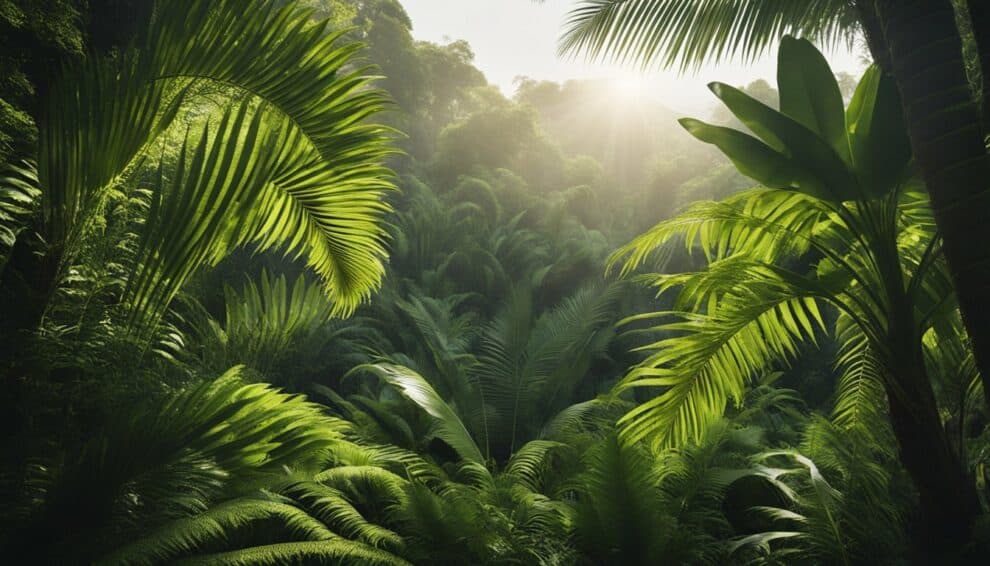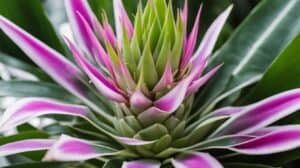Cycads are ancient plants that have been around for millions of years and are often referred to as “living fossils.”
These plants belong to a group of seed-bearing plants that are native to tropical and subtropical regions of the world.
Despite their age, cycads are still popular among gardeners and plant enthusiasts, especially those who are just starting out.

For beginners, cycads are an excellent choice as they are relatively easy to care for and can add a unique touch to any garden or indoor space.
Cycads come in a variety of shapes and sizes, from small potted plants to large trees, and can be grown both indoors and outdoors.
They are also known for their attractive foliage, which ranges from fern-like fronds to stiff, spiky leaves.
In this article, we will explore the world of cycads and provide tips and advice for beginners who are interested in growing these ancient plants.
From choosing the right species to caring for your plants, we will cover everything you need to know to get started with cycads.
So, whether you’re a seasoned gardener or a beginner looking to add some prehistoric charm to your home, read on to discover the fascinating world of cycads.
Understanding Cycads
Cycads are ancient plants that have been around for over 300 million years.
They are often referred to as “living fossils” because they have remained relatively unchanged for millions of years.
These plants are popular among gardeners and collectors because of their unique appearance, easy-to-care-for nature, and historical significance.
Historical Significance
Cycads have played an important role in the evolution of plant life on Earth.
They were one of the first groups of plants to evolve seeds, which allowed them to better adapt to changing environments.
In fact, many of the plants we know today, such as flowering plants, evolved from cycads.
Cycads were also an important source of food for dinosaurs during the Mesozoic Era.
Fossil evidence suggests that dinosaurs would eat the leaves and cones of cycads, which were abundant at the time.
Distinctive Features
Cycads are easily recognizable by their unique appearance. They have a stout, woody trunk with a crown of large, fern-like leaves.
The leaves are typically glossy and dark green, with a leathery texture. Some species of cycads also produce cones, which contain seeds.
One of the most distinctive features of cycads is their ability to produce new leaves from a central growing point.
This means that even if the plant loses all of its leaves, it can still produce new ones and continue to grow.
Overall, cycads are fascinating plants with a rich history and unique appearance.
They are a great choice for beginners because they are easy to care for and can add a touch of prehistoric charm to any garden or collection.
Cultivating Cycads

Choosing the Right Species
Before cultivating cycads, it’s important to choose the right species that suits your needs.
Some species may grow well in certain climates, while others may require more care and attention.
It’s also important to consider the size of the plant when it reaches maturity, as some species can grow quite large.
Here are some popular cycad species that are great for beginners:
| Species | Characteristics |
|---|---|
| Cycas revoluta | Easy to grow, drought tolerant, and can grow in a range of climates |
| Encephalartos horridus | Slow-growing, but has a unique blue-gray color and can tolerate some shade |
| Zamia furfuracea | Compact and easy to care for, with attractive foliage |
Planting and Care
Cycads are hardy plants that can thrive with minimal care, but they do require some attention to grow successfully.
Here are some tips for planting and caring for cycads:
- Plant in well-draining soil with some sand or gravel mixed in to improve drainage.
- Water regularly, but be careful not to overwater as this can cause root rot.
- Fertilize once or twice a year with a slow-release fertilizer.
- Prune dead or damaged leaves to keep the plant looking tidy.
- Protect from extreme temperatures, such as frost or heatwaves.
Common Challenges
While cycads are generally easy to care for, there are some common challenges that beginners may encounter. Here are some issues to look out for:
- Scale insects: These small pests can damage the plant by sucking sap from the leaves.
Treat with an insecticide or by wiping the leaves with a soapy solution.
- Yellowing leaves: This can be a sign of overwatering or poor drainage. Adjust watering or soil mix as needed.
- Root rot: Overwatering or poor drainage can cause the roots to rot. Cut away any affected roots and repot in fresh soil.
By following these tips, beginners can successfully cultivate cycads and enjoy the unique beauty of these relics of the plant kingdom.
Cycads in Landscaping

Cycads make great additions to any landscape design. They have unique shapes and textures that add interest to any garden.
Here are some design principles and companion plants to consider when incorporating cycads into your landscaping.
Design Principles
Cycads are often used as focal points in a garden. They can be planted alone or in groups to create a dramatic effect.
Their unique shapes and textures make them stand out in any landscape design.
When designing with cycads, it is important to consider their size and growth rate.
Some species can grow up to 30 feet tall, while others stay small and compact.
It is also important to choose the right location for your cycad, as they prefer well-draining soil and partial shade.
Companion Plants
Cycads can be paired with a variety of companion plants to create a beautiful and cohesive landscape design.
Here are some plants that pair well with cycads:
- Bromeliads: These colorful plants add a tropical touch to any garden and thrive in the same conditions as cycads.
- Ferns: Ferns are great groundcover plants that add texture and color to the base of cycads.
- Palms: Palms and cycads are both tropical plants that complement each other well.
- Succulents: Succulents are low-maintenance plants that can be planted around the base of cycads to create a desert-inspired landscape.
Incorporating cycads into your landscaping can add a unique and interesting element to your garden.
With the right design principles and companion plants, you can create a beautiful and cohesive landscape design that showcases these relics of the plant kingdom.
Frequently Asked Questions

Where can I typically find cycads growing in the wild?
Cycads can be found growing in the wild in a variety of locations, including tropical and subtropical regions.
They are often found in areas with well-draining soil and plenty of sunlight.
Some common places to find cycads include rainforests, deserts, and coastal regions.
What are some common species of cycads?
There are many different species of cycads, each with its unique characteristics and features.
Some of the most common species include the Sago Palm, the King Sago, and the Coontie Palm.
Each of these species has its unique growth habits, leaf shapes, and other distinguishing features.
Are the seeds of cycads safe to handle or are they toxic?
While the seeds of cycads can be toxic if ingested, they are generally safe to handle.
However, it is still important to take precautions when handling cycad seeds, such as wearing gloves and washing your hands thoroughly after handling them.
How long ago did cycads first make an appearance on Earth?
Cycads are some of the oldest living plants on Earth, with fossil evidence dating back over 300 million years.
They were once a dominant plant group during the Mesozoic era and are often referred to as “living fossils” due to their ancient lineage.
What is the average cost of a cycad plant for gardening enthusiasts?
The cost of a cycad plant can vary depending on the species and size of the plant.
Generally, smaller plants can be purchased for around $20-$30, while larger specimens can cost several hundred dollars or more.
Why are cycads considered to be unique and important in the plant kingdom?
Cycads are unique and important in the plant kingdom for several reasons.
They are some of the oldest living plants on Earth and have survived multiple extinction events.
They also have a unique reproductive system, with male and female plants producing cones rather than flowers.
Additionally, cycads are important ecologically, providing habitat and food for a variety of animals and insects.














